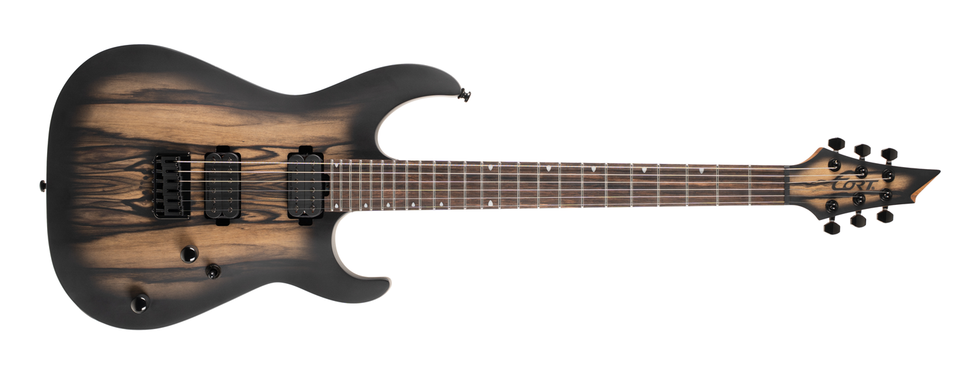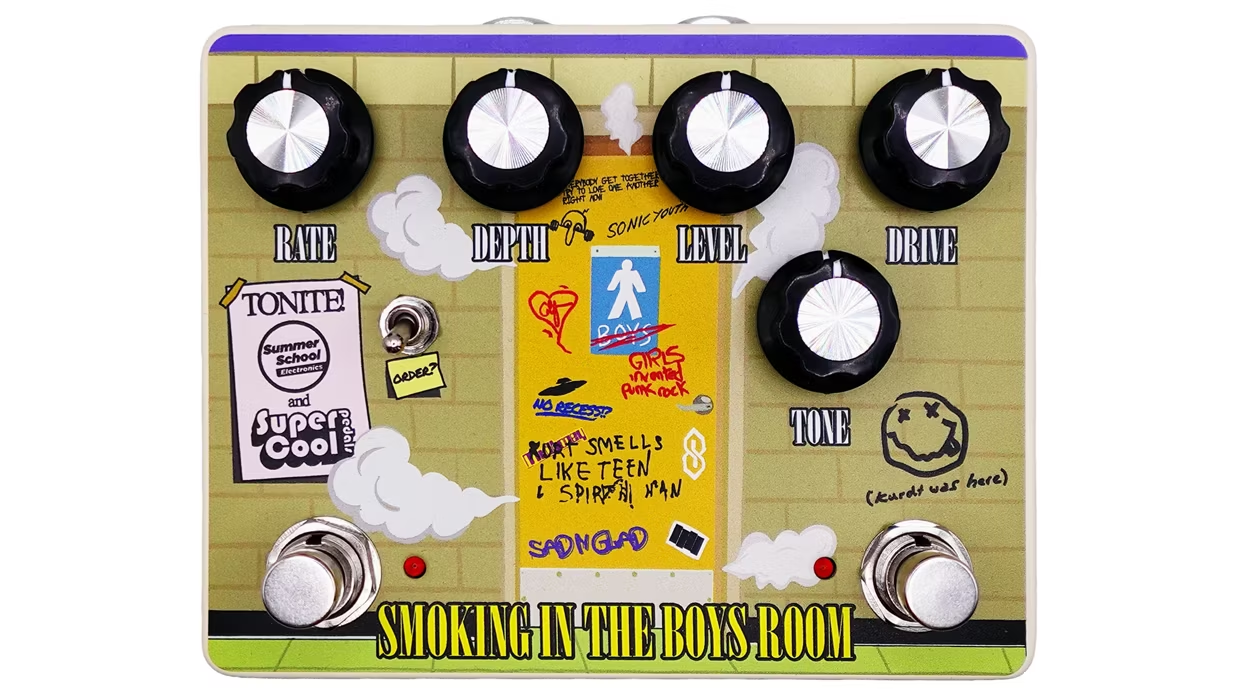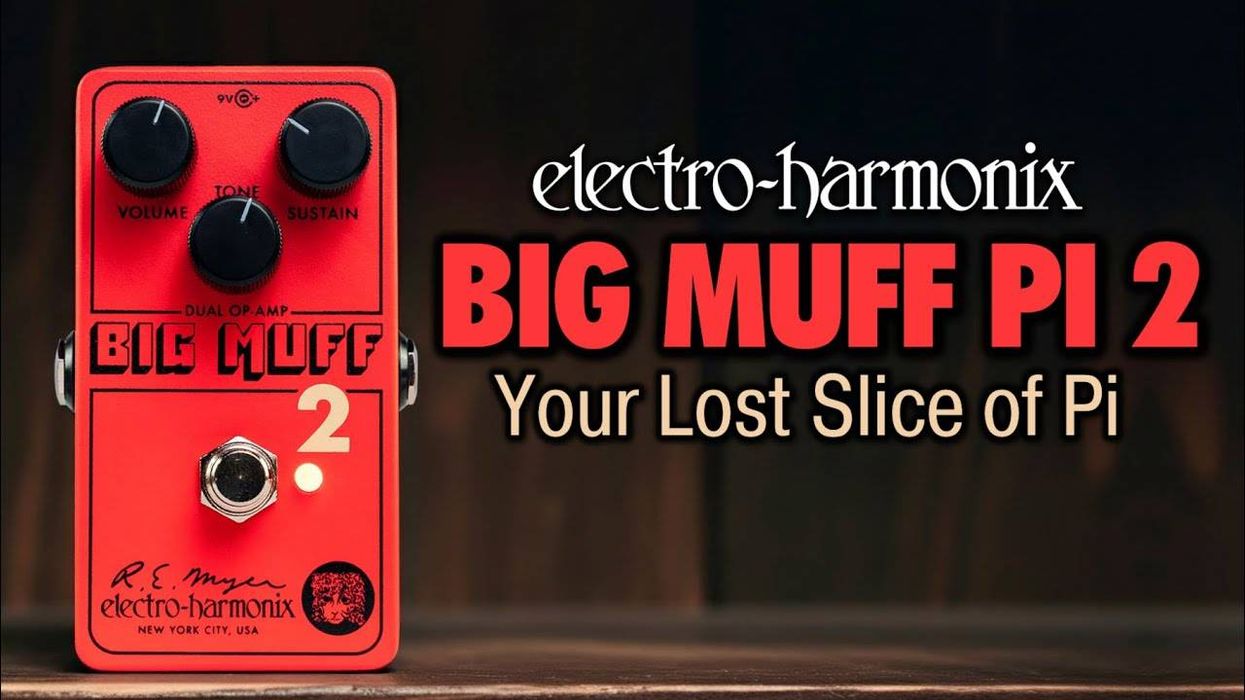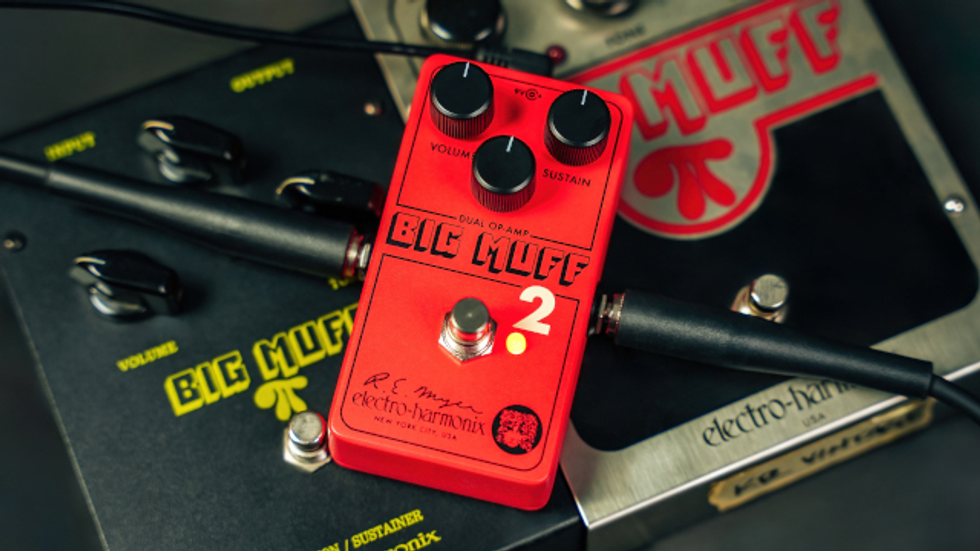Christie’s will auction Jeff Beck: The Guitar Collection on January 22, 2025, in London. See the highlights.
Jeff Beck (1944-2023), was a trailblazing guitar icon and legend. A multi-Grammy award-winning artist – twice inducted into the Rock & Roll Hall of Fame – his inimitable sound led to collaborations with countless internationally renowned musicians and friends including: Jimmy Page, Jimi Hendrix, Ronnie Wood, Rod Stewart, Steven Tyler, Billy Gibbons, Jan Hammer, Eric Clapton, David Gilmour, Tina Turner, Mick Jagger, BB King, Buddy Guy, Nile Rodgers, Carlos Santana, Stevie Wonder, Imelda May and Johnny Depp, amongst others. Providing a remarkable opportunity for fans, guitarists and collectors, this unique sale comprises over 130 guitars, amps and ‘tools-of-the-trade’, which Jeff played through his almost six-decades-long career, from joining The Yardbirds in March 1965, to his last tour in 2022. With estimates ranging from £100 to £500,000, highlights will be on public view in Los Angeles from 4 to 6 December, followed by the full collection being on show in the pre-sale exhibition at Christie’s headquarters in London, from 15 to 22 January 2025.
Sandra Beck: “I hope you enjoy reading through this catalogue featuring the tools of my Gorgeous Jeff’s life. These guitars were his great love and after almost two years of his passing it's time to part with them as Jeff wished. After some hard thinking I decided they need to be shared, played and loved again. It is a massive wrench to part with them but I know Jeff wanted for me to share this love. He was a maestro of his trade. He never lusted after commercial success. For him it was just about the music. He constantly reinvented himself with his musical direction and I could not single out one person, one recording or one guitar as his favourite. I hope the future guitarists who acquire these items are able to move closer to the genius who played them. Thank you all for considering a small piece of Jeff that I am now hoping to share with you.”
COLLECTION HIGHLIGHTS:
The sale is led by one of Jeff Beck’s most recognisable guitars – his iconic 1954 ‘Oxblood’ Gibson Les Paul, famously depicted on the cover of his seminal 1975 solo instrumental album Blow By Blow, and used on tracks including the Beck-Middleton original composition ‘Scatterbrain’ (estimate: £350,000-500,000). Purchased in November 1972 in Memphis, the guitar saw extensive live action with the short-lived power trio Beck, Bogert & Appice in 1973. Other notable live shows through the 1970s included his performance alongside David Bowie and Mick Ronson at the farewell show of Ziggy Stardust & The Spiders From Mars, at the Hammersmith Odeon on 3 July 1973, the film of which was released in 2023, including Jeff’s iconic guest appearance.
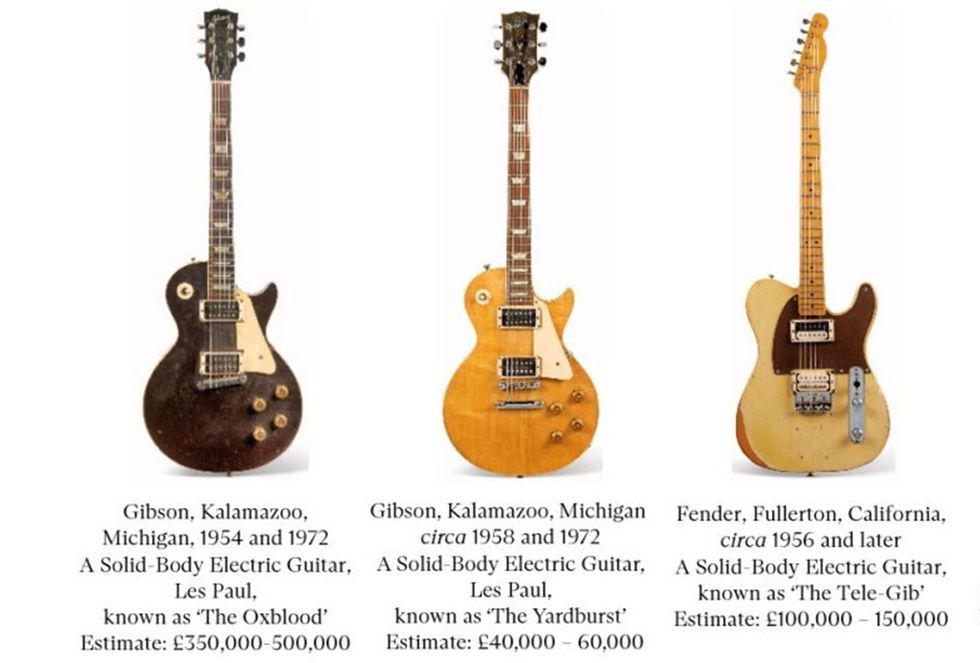
The original ‘Yardburst’, Jeff Beck bought his circa 1958 Gibson Les Paul in London in 1966 whilst in the seminal British rock group The Yardbirds (estimate: £40,000-60,000). The history and battle scars of this guitar are legendary. Purchased at Selmer’s in Charing Cross for £175 in early 1966, it was used to record ‘Over Under Sideways Down’ and ‘Happenings Ten Years Time Ago’ on The Yardbirds’ album Roger The Engineer, as well as Jeff Beck’s solo track ‘Beck’s Bolero’, co-written with Jimmy Page and recorded with Keith Moon, John Paul Jones and Nicky Hopkins. Jeff removed the black pickguard, switch surround and the original sunburst finish in late 1967, leaving the guitar in its natural raw blonde state. Jeff played the guitar on his debut studio solo album Truth, the first to showcase the talents of backing band the Jeff Beck Group, featuring a young Rod Stewart on vocals and Ronnie Wood on bass, and on tour when the band crossed the Atlantic in 1968, including for a memorable residency at the Scene in New York in June 1968, where nightly encores saw Jimi Hendrix join the band on stage, including for a jam on this very guitar.
The ‘Tele-Gib’ is a hybrid guitar put together by world-renowned pickup designer Seymour Duncan specifically for Jeff Beck in 1973 (estimate: £100,000-150,000). Comprising a Fender Telecaster body and neck with a pair of Gibson PAF humbucking pickups removed from a Flying V, Seymour took the guitar to Jeff whilst he was rehearsing with Beck, Bogert & Appice in London in late 1973. The Tele-Gib can be heard on the beautiful Stevie Wonder track ‘Cause We’ve Ended As Lovers’, from Blow By Blow, and was subsequently used for many other sessions and live performances, including The Secret Policeman’s Other Ball in 1981, alongside fellow former Yardbird, Eric Clapton.
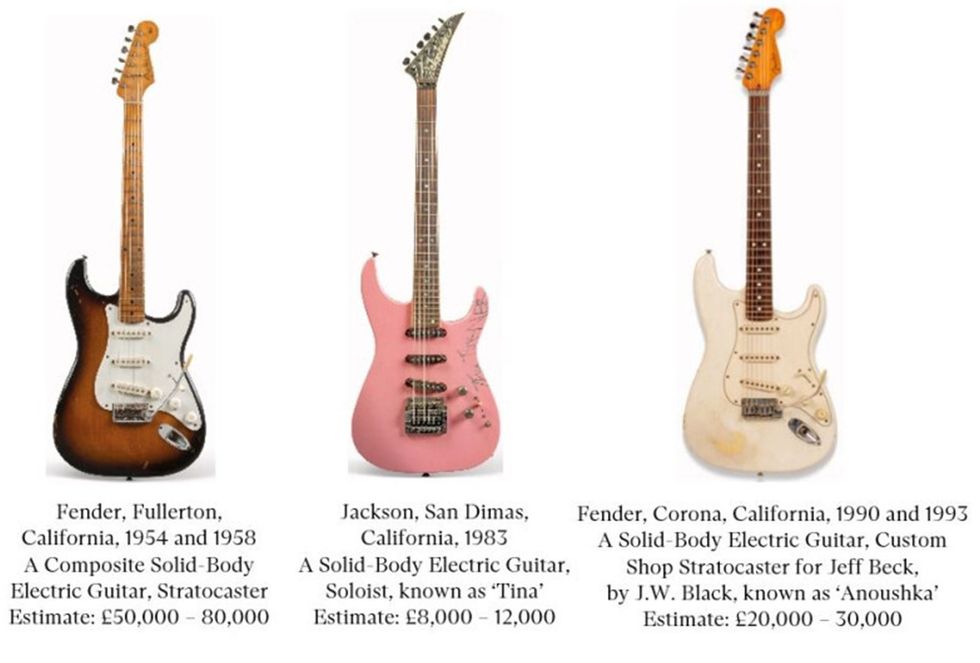
Jeff Beck’s 1954 Sunburst Fender Stratocaster, serial number 0062, was one of his most prized possessions (estimate: £50,000-80,000). A gift from Humble Pie’s Steve Marriott following a late-night session in 1976, Jeff replaced the existing Tele neck with a 1958 Strat neck, which he had used to record many tracks on Beck-Ola (1969), Rough And Ready (1972) and Blow By Blow (1975). The ’54 would become Jeff’s principal performance and recording guitar for the rest of the ‘70s and into the early ‘80s – including for the majority of the 1980 album There And Back, and the A.R.M.S. Benefit Concert and tour in 1983, which saw the three ex-Yardbirds guitarists perform on stage together for the first time – Jeff Beck, Jimmy Page and Eric Clapton – alongside The Rolling Stones Charlie Watts, Bill Wyman and Ronnie Wood and many other world-famous musicians.
‘Tina’ the Pink Jackson Soloist was debuted during the 1983 A.R.M.S. tour, at Madison Square Garden in New York City (estimate: £8,000-12,000). Fitted with a patented Kahler bridge, it enabled Jeff to deliver even more extreme string bends and harmonics and was immediately employed on several important recording sessions with world-renowned artists, most notably Tina Turner. Having lent his unique talents to her Mark Knopfler-written single ‘Private Dancer’, Jeff requested that she sign his guitar in lieu of payment for the session. When the pen failed, she engraved her signature with a flick-knife and then rubbed in green nail varnish for good effect. Jeff would go on to play the guitar on his 1985 album Flash, produced by Nile Rodgers, including for his reunion duet with Rod Stewart, ‘People Get Ready’.
The longest-serving of his Fender White Stratocasters, ‘Anoushka’ was master built by J.W. Black of the Fender Custom Shop (estimate: £20,000-30,000). Jeff modified his Strats – the model he referred to as ‘another arm’ – switching necks, bodies and electronics to suit his needs. The neck of this guitar was Jeff’s favourite and, when united with the present white Strat body he named ‘Anoushka’, became his primary recording and performance Strat for 16 years. It was used to record four solo albums and for hundreds of live performances, including much of Jeff’s legendary Ronnie Scott’s residency, his second induction into the Rock & Roll Hall of Fame, a co-headline tour with Eric Clapton, and for his performance at the Obama White House alongside B.B. King and Mick Jagger in 2012.


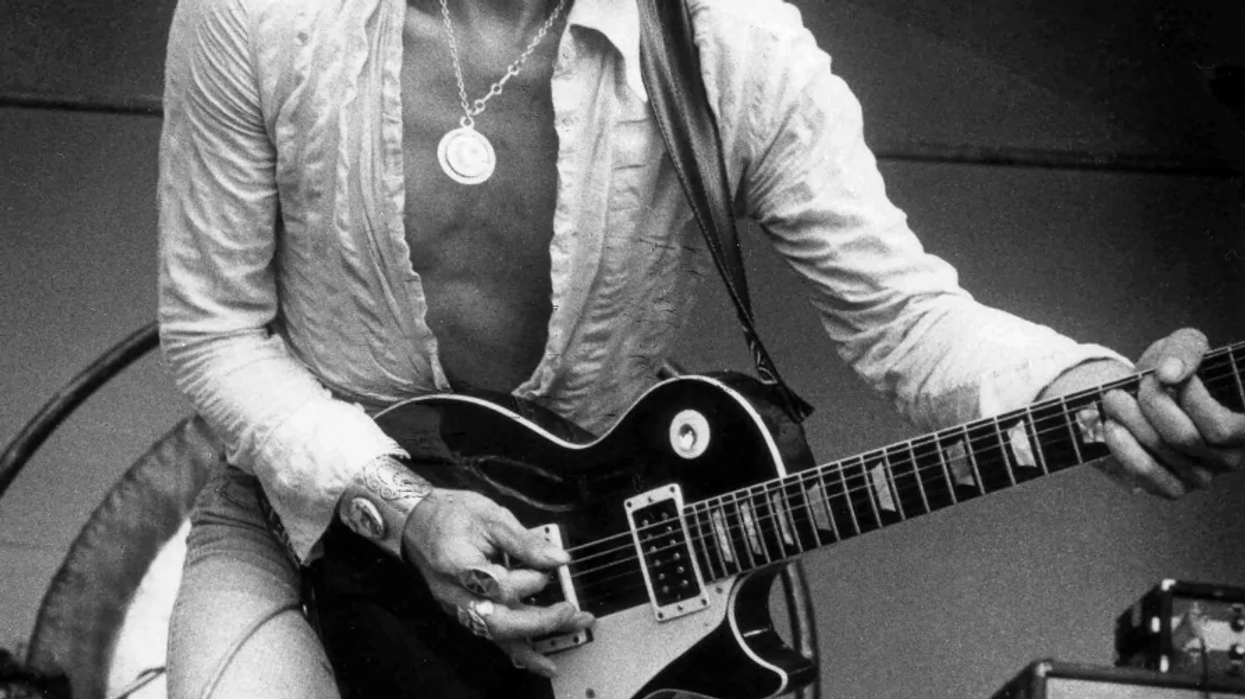
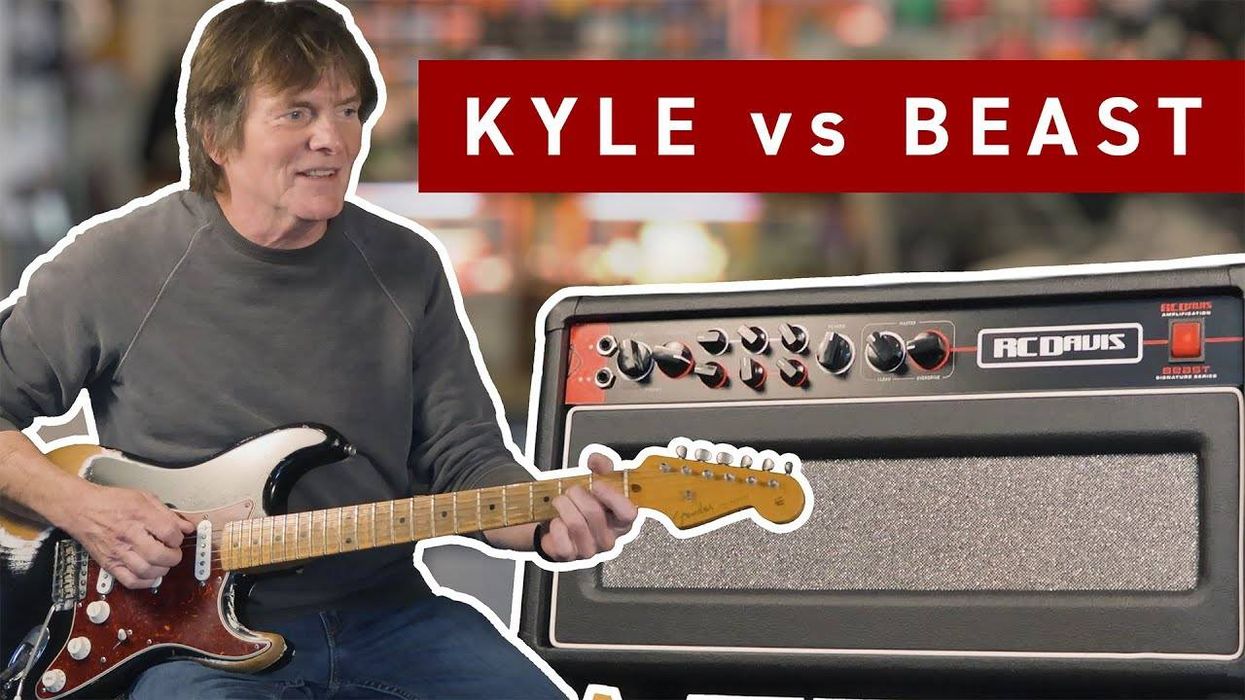



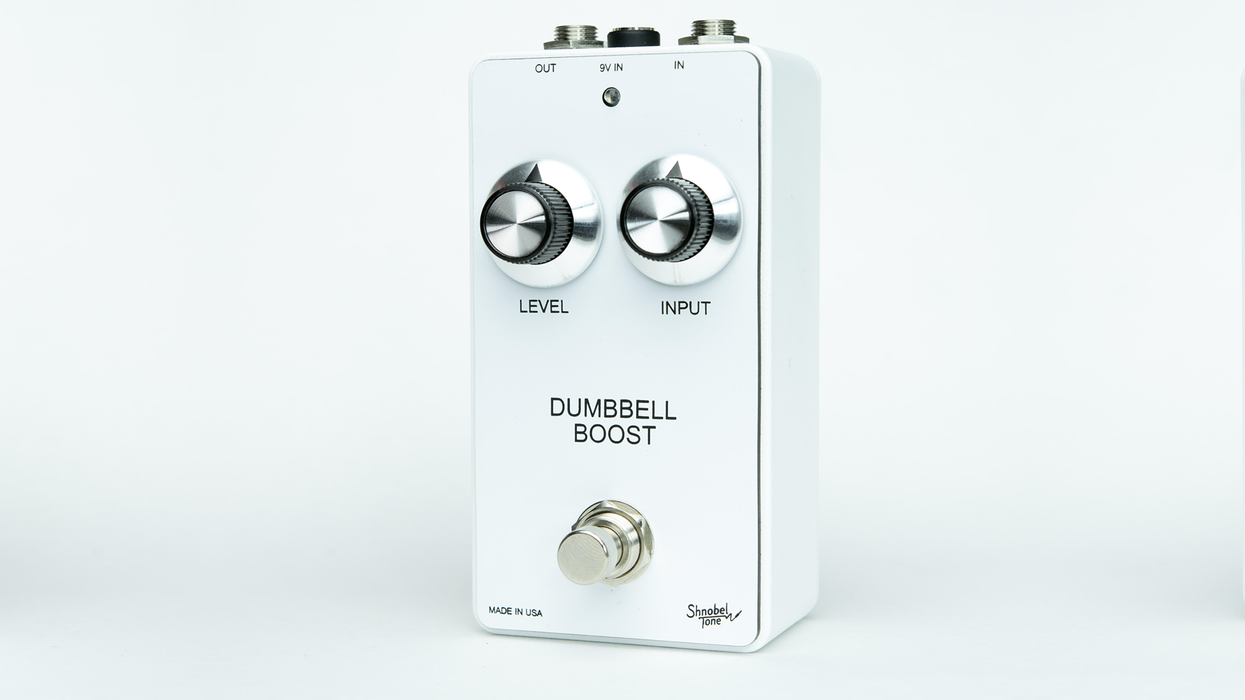



![Rig Rundown: Russian Circles’ Mike Sullivan [2025]](https://www.premierguitar.com/media-library/youtube.jpg?id=62303631&width=1245&height=700&quality=70&coordinates=0%2C0%2C0%2C0)



